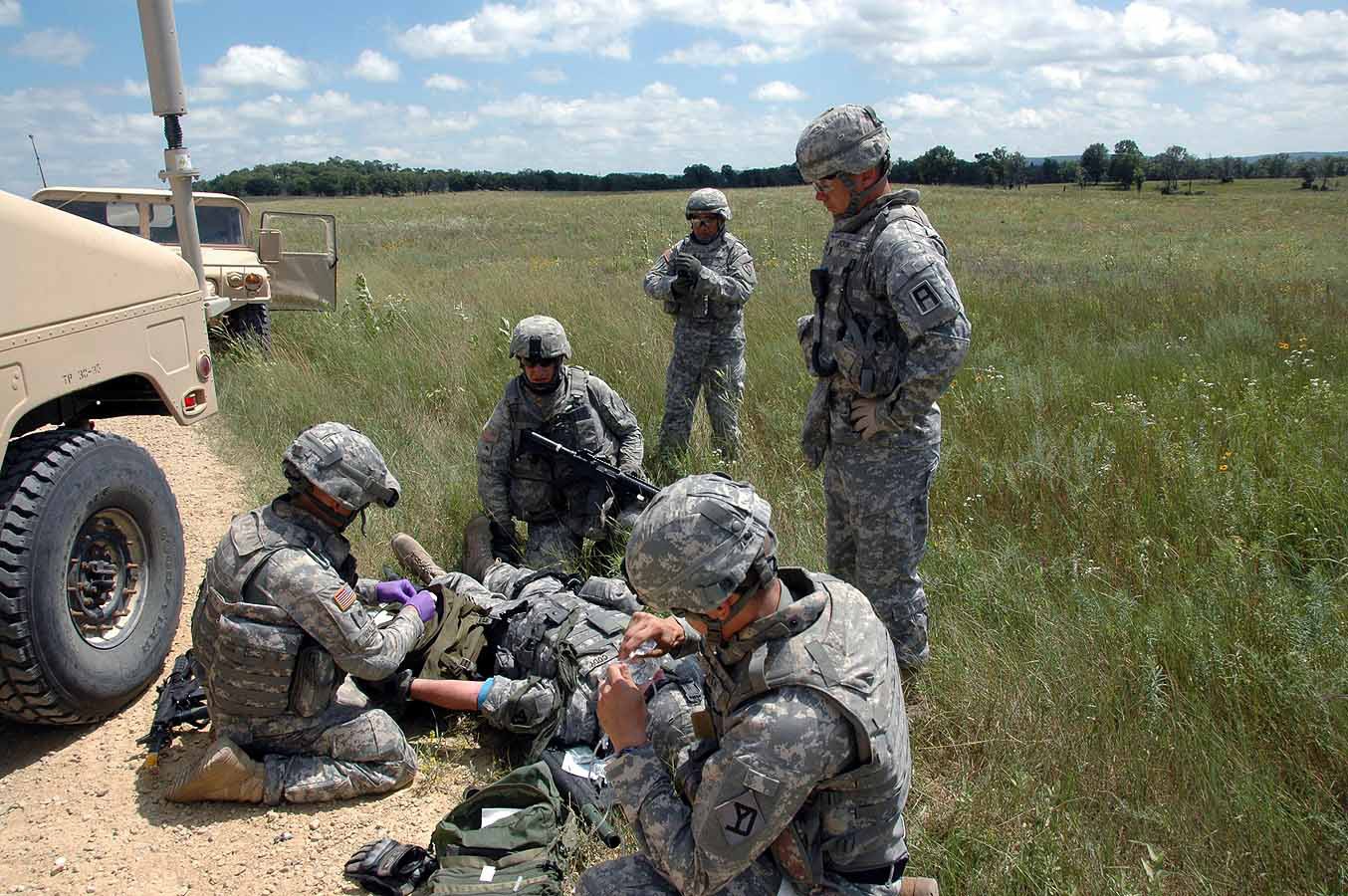
Since the early days of the decade, the 1st, 338th Training Support Battalion (TSBN) at Fort McCoy has provided training and support for units deploying to Operations Iraqi (OIF) and Enduring Freedom (OEF).
Although the topics trained have changed, the hard work and professionalism of the training teams remains constant. Currently, these teams provide training in Modern Army Combatives, Blue Force Tracker (BFT) and conduct a Situation Training Exercise (STX) for deploying units.
Additionally the unit's team of liaison officers (LNOs) tracks and assists units in documenting training for validation by the brigade headquarters - the 181st Infantry Brigade on behalf of First Army.
The Combatives Team maintains a consistently high and varied Operations Tempo. In addition to training the Army Warrior Fight Tasks for deploying units, the team's trainers conduct more advanced Level 1 and 2 Modern Army Combatives Program (MACP) certifications.
It has done so for deploying units, installation tenants, other units training at Fort McCoy and even ROTC cadets at area colleges. MACP is a mixed martial arts-based program for hand-to-hand combat developed by the Army in the late 1990s.
Last but not least, the team supports other 1st, 338th TSBN events. Unit trainers provide Personal Security Detachment (PSD) training. The combatives trainers certify PSD Soldiers at Level 1 and later test their skills by donning padded "Blouwer" suits in order to act as opposing forces (OPFOR) for PSD injects. This year alone 1st, 338th TSBN trainers have certified more than 60 Soldiers at MACP Level 1, 10 at MACP Level 2 and have supported the training for several battalion- and brigade-level PSDs.
Soldiers of the BFT Team perform a similarly varied mission. This team's trainers provide highly technical instruction on the operation and maintenance of BFT equipment as part of the Force XXI Battle Command Brigade and Below system.
BFT is a satellite-based, digital system for communication and battle tracking developed in the late 1990s and used extensively by deploying units.
The team offers a variety of training opportunities for deploying units to include a 40-hour certification, a 20-hour familiarization course and a nine-hour basic course. Additionally, the team provides technical support for other brigade training that use BFT.
Lastly, team members train units on the DARWARS virtual rehearsal tool. DARWARS is an on-line, game based, system developed in 2003, which allows gun truck crews to simulate and rehearse missions similar to what they will later encounter during live training events or in-theater.
Observer-controller-trainer (OCT) teams from the 1st, 338th TSBN also conduct the STX for deploying units.
This is a modular, seven-day exercise focusing on mounted combat patrols and convoys, improvised explosive device (IED)-defeat, urban operations and base defense.
OCT teams train Soldiers on individual tasks in these four areas in a round-robin format.
Units then integrate and execute these skills on a series of collective lanes and events. The modularity and flexibility of STX allows it to be tailored to the needs of the unit.
Mission scenarios or even the duration of the exercise are specific to the applicable theater, strength and mission of the unit.
These use OPFOR, contracted cultural role players, foreign language speakers, simulated IEDs and specially designed routes and sites to give the unit the most realistic and demanding training event possible.
Units may be required to react to an IED on the road, meet with an Iraqi mayor in a village and evacuate a casualty to a Contingency Operating Location - all during the same patrol. The OCT teams are paired with, train and evaluate the same unit during the entire exercise ensuring continuity of trainers and support.
The teams constantly update the exercise and incorporate the latest tactics, techniques and procedures and equipment such as Mine Resistant Ambush Protected (MRAP) vehicles, biometrics collection and explosives detection devices.
In addition to the training teams, the LNO section works with units at all phases of mobilization to set them up for success.
Units mobilizing at Fort McCoy or any other First Army Mobilization Station are required to train on a series of more than 500 U.S. Army Forces Command-mandated tasks prior to deployment.
While unit training is always ongoing, the core of it is conducted the year before mobilization at home station and during its stay at the mobilization station.
All training must be tracked and documented. LNOs ensure this is done properly so the unit can be validated for deployment by First Army.
The duties of an LNO are demanding.
The Soldiers can be flying to a unit's home station to work with them during pre-mobilization, working with a unit at Fort McCoy to ensure a member gets critical training or tracking a Soldier who is following his unit into theater while he/she receives critical training.
In these ways, the Soldiers of the 1st, 338th TSBN at Fort McCoy continue to train and support units as they prepare to support OIF and OEF.

Social Sharing